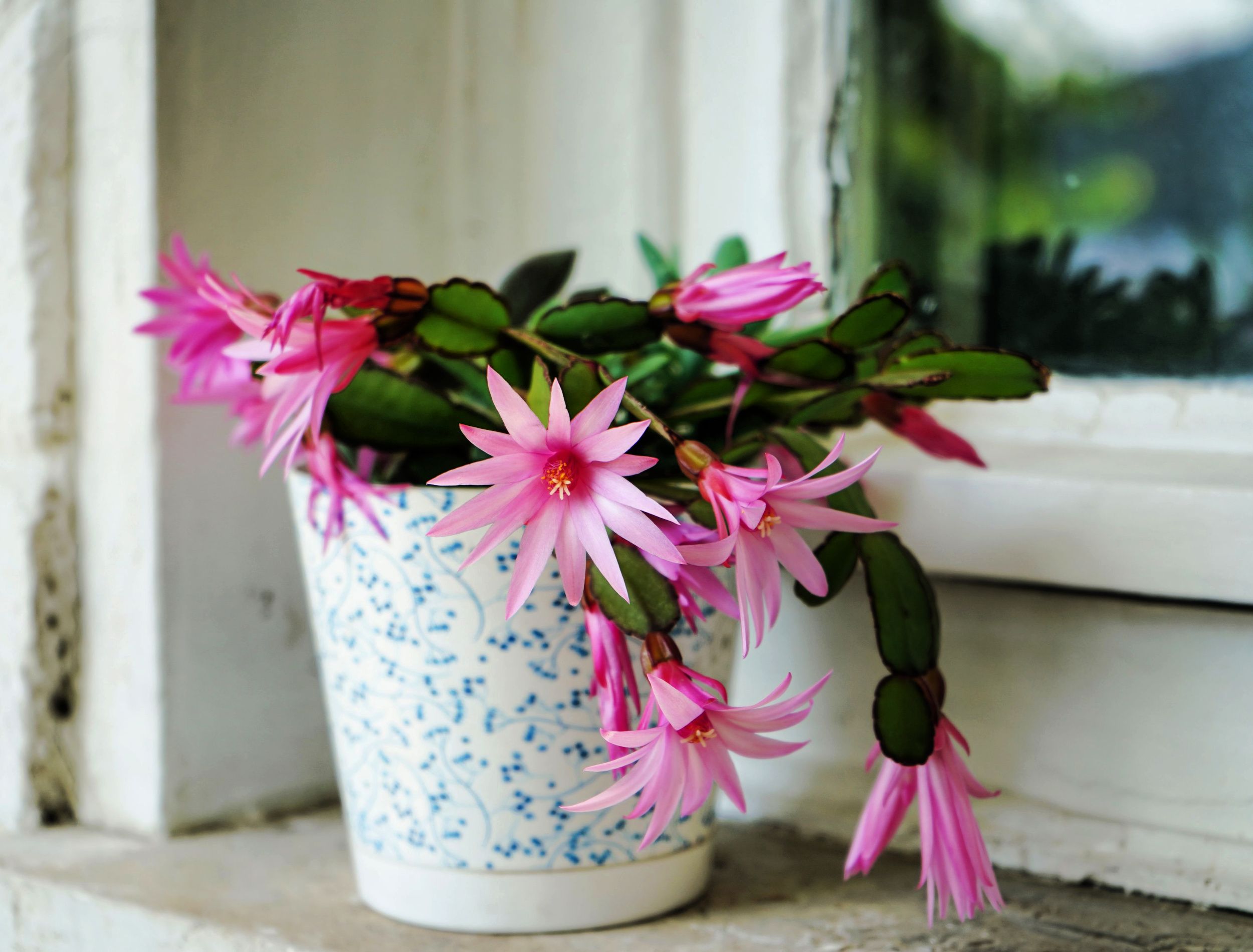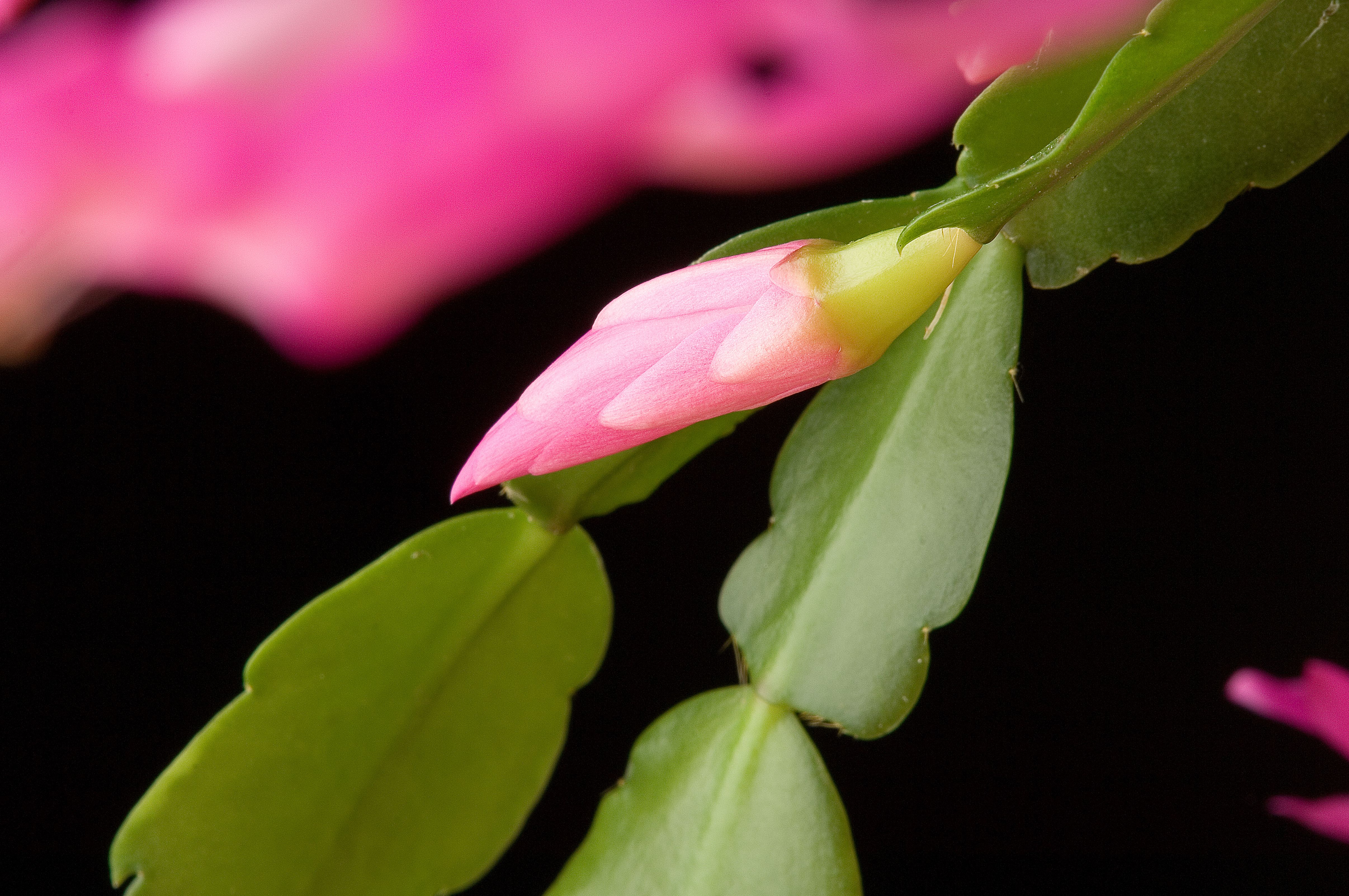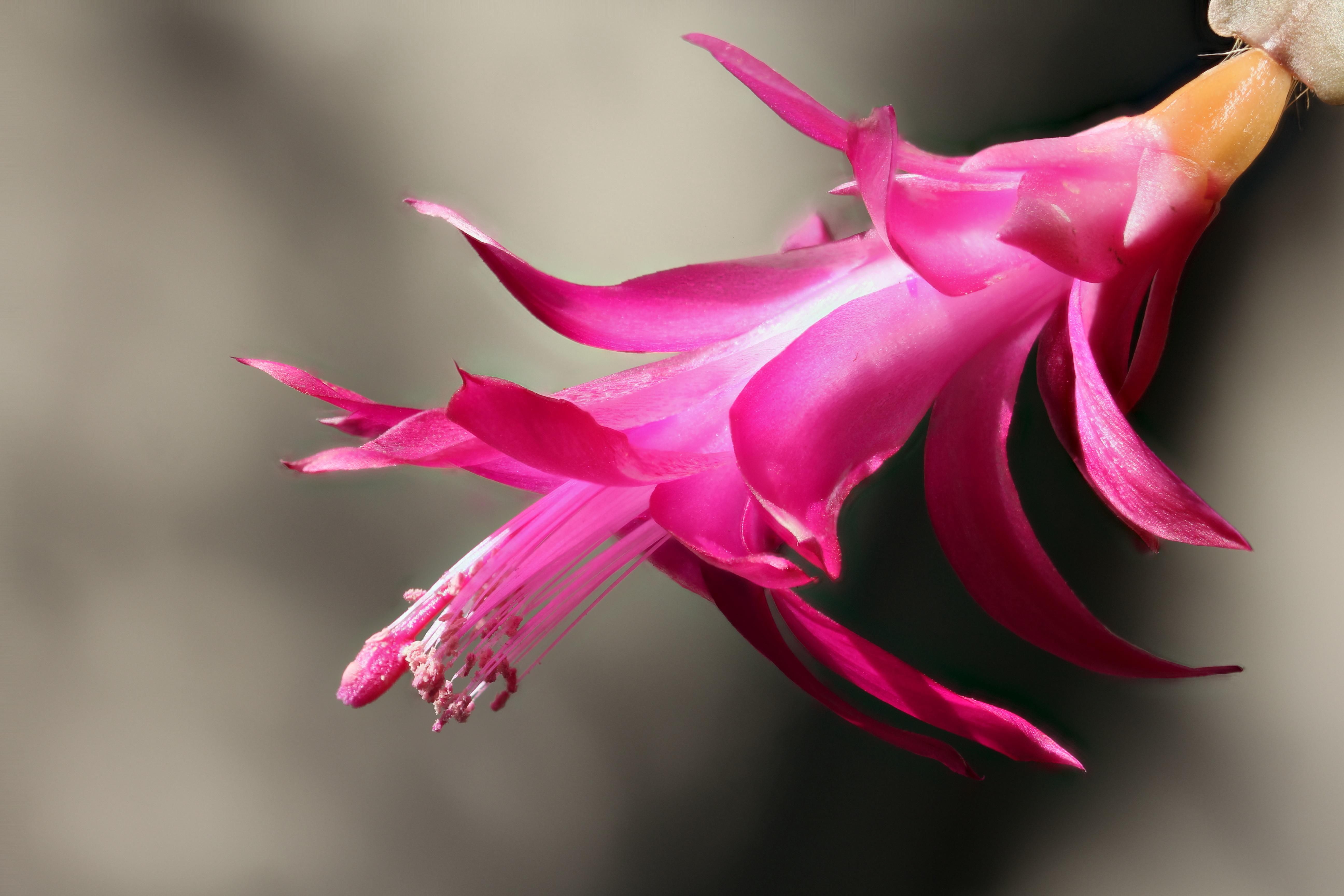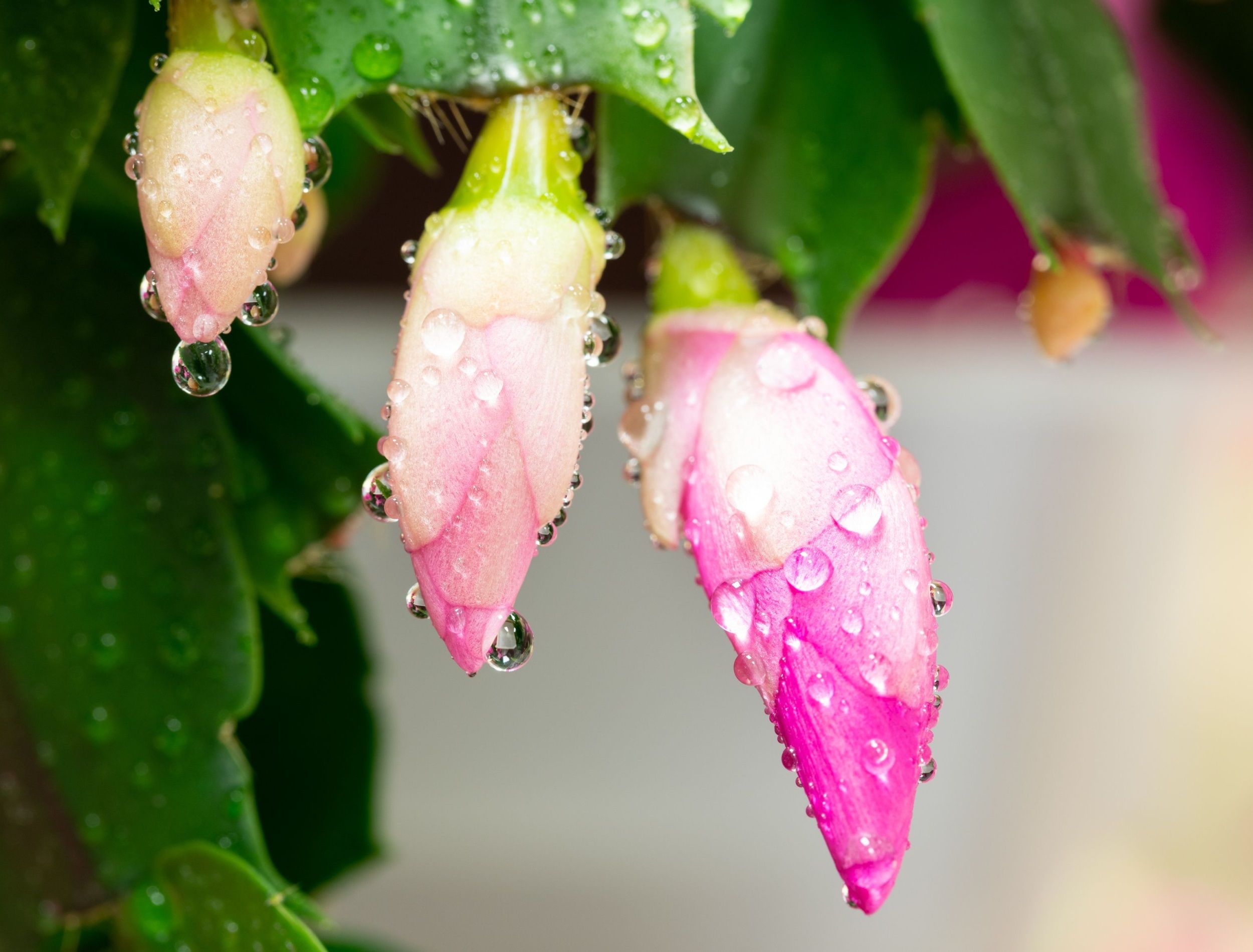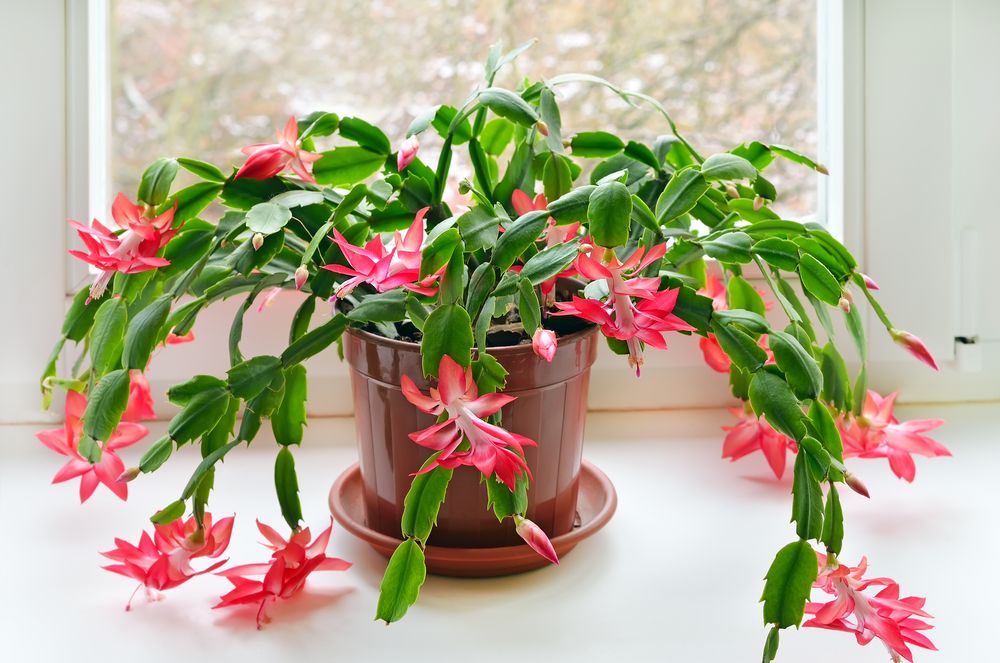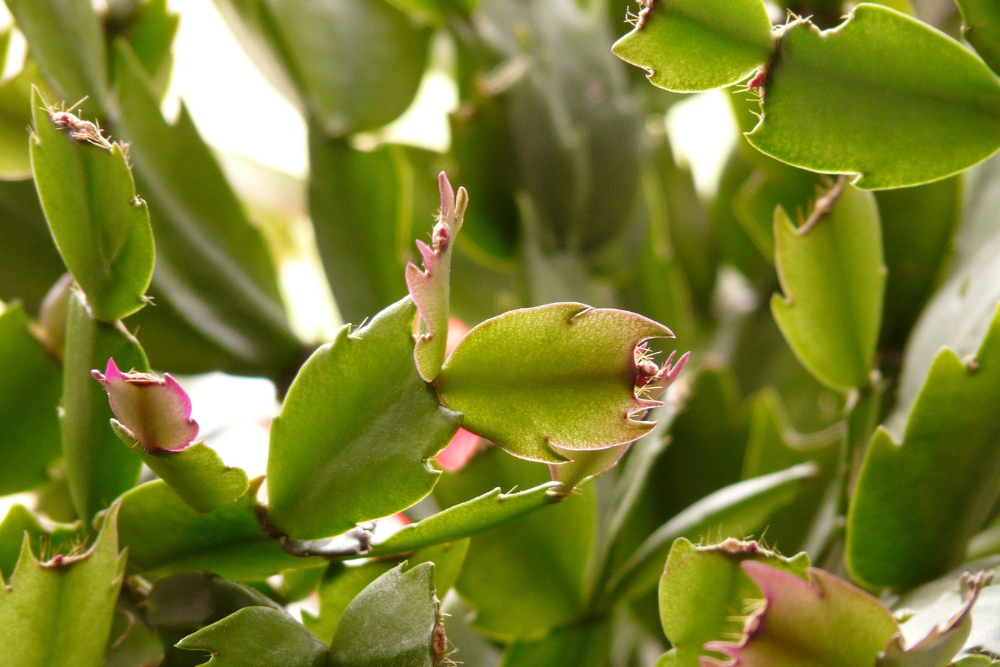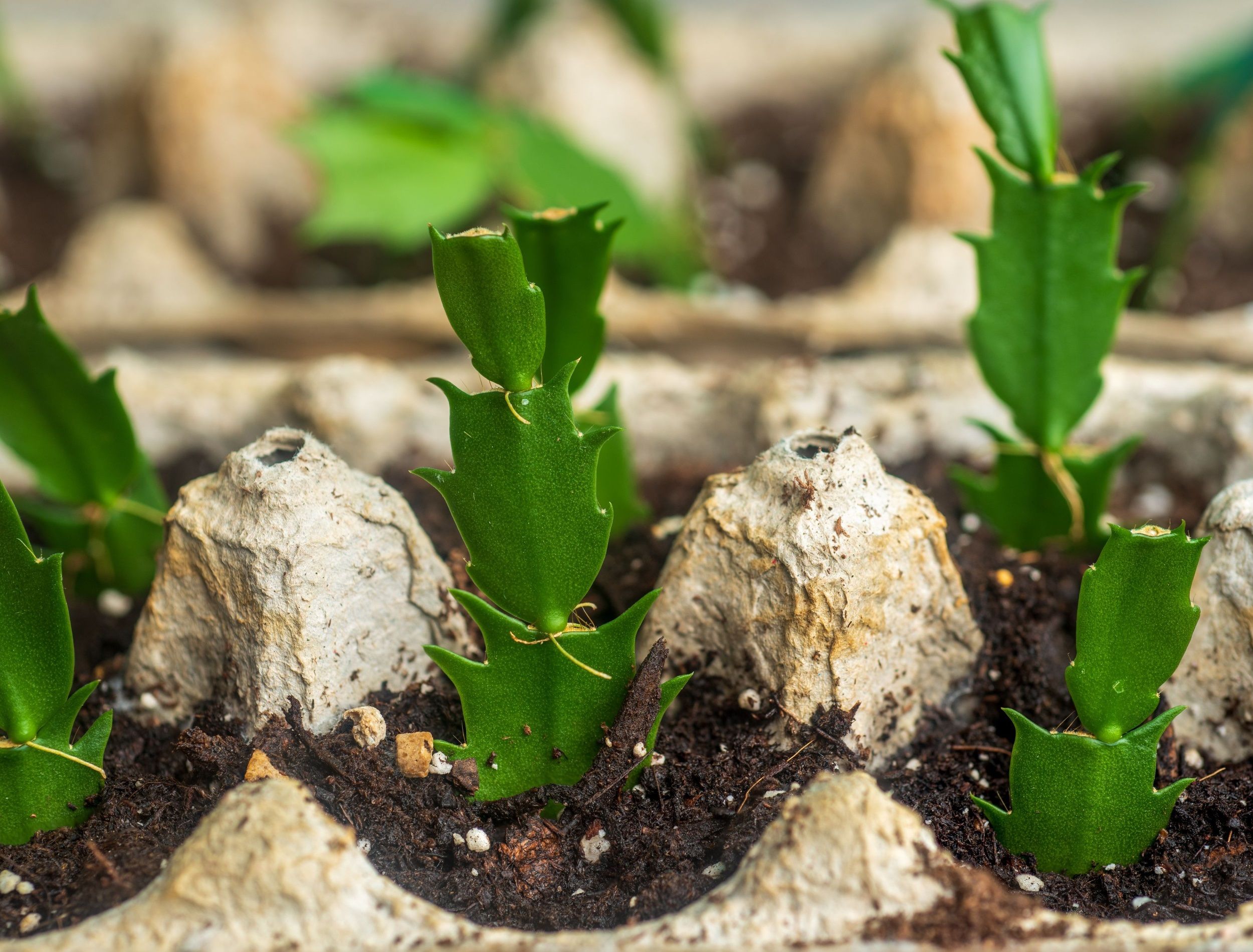You’ve probably heard about the Christmas cactus, a high-impact, low-maintenance plant that injects color into dreary winters. But did you also know about the Thanksgiving cactus? They are different plants! Both succulents hail from South America and have many similar qualities, such as nodule leaves, pointy flowers, and growing patterns. They are often confused with one another, even by garden shops, which sometimes mislabel them.
But don’t worry; the key differences are easy to spot once you know what they are. Learn how you can tell, once and for all, which plant you’re dealing with. Below find tips for propagating, and getting the best holiday bloom.
Cactus Qualities
There are a few key things to look for when deciphering between a Christmas cactus (Schlumbergera bridgesii) and a Thanksgiving cactus (Schlumbergera truncata).
Leaves
Image credits: jupiterimages via FreeImages
It’s easy to tell these two plants apart when you look closely at the shape of their leaves. Though both have segmented, serrated leaves, the difference lies in the edges of the leaf.
Christmas cactus leaves are rounded and scalloped along the edge with a slightly curved tip. The Thanksgiving cactus is noticeably spikier, with two to four points on each side of the leaves, including on the tip, much like antenna.
Flowers
Image credits: GeoffS via MorgueFile
The flowers of both plants bloom from the tips of the leaves and have similar tubular shapes with multiple layers of pedals. If the right conditions are met, both can bloom more than once a year.
If the flowers are pink or white with pink or purple anthers (pollen-producing parts) and bloom in December, you’re looking at a Christmas cactus.
The Thanksgiving cactus, contrastingly, comes in a wider range of colors — including pastel pink, orange, purple, red, and white — with yellow anthers. And they (surprise!) bloom closer to Thanksgiving.
General Care Tips
Though different plants, the process for caring for Christmas and Thanksgiving cacti is the same.
Pot, Soil, and Water
Image credits: James Jiao via Shutterstock
These cacti do well in smaller pots. Under-potting them will allow them to become root-bound before moving up slightly in pot size. They aren’t too picky about soil but thrive in a potting mix specially formulated for succulents. Select a pot with ample drainage and become watering check to see if the soil is dry 1 inch down.
Light and Temperature
Image credits: Nadezhda Nesterova via Shutterstock
These cacti are known as short-day plants. To bloom, they need 12 to 14 hours of darkness per day for about four to six weeks. Nighttime temperatures should range between 60 to 65 degrees Fahrenheit during this time as well. If your climate doesn’t naturally offer these conditions, mimic them by moving your plant to a more secluded room in the weeks before the holidays.
Maintain this cool and dark environment until you see flower buds appearing. At that point, you can put your plant on display for everyone to enjoy its festive colors.
Common Issues
Image credit: Hans via Pixabay
Luckily, both cacti are easy to care for and not prone to many diseases or pests. The main issue with these plants is overwatering and too much exposure to the sun. A shriveling stem can signal either, so if you see this, assess the environment and check on the dampness of the soil.
If you don't see flowers, you might not be giving your plant the darkness it requires, so try switching the location. If you have flowers, but the buds are dropping, this could be because of wrong or fluctuating temperatures, so make sure your plant isn’t too hot during the day and/or too cold at night.
Sometimes you might just notice your plant isn’t producing much new growth. This could be due to overpotting, meaning your pot is too large to allow for the necessary pot-binding. Try removing some soil and moving your plant to a smaller pot.
Propagating
Image credits: Focused Adventures via Shutterstock
Christmas and Thanksgiving cacti are gifts that keep on giving. Often, these plants are passed down over generations through shared cuttings from one mother plant (like a trusty sourdough starter!). When you prune your cactus, save cuttings from two or more sections to produce plants to share with friends and family. The best time to prune is after the blooming season.
Place your cutting into a jar of water and leave it in a bright location. Watch your cutting, and be sure to top up the water over this time. In up to eight weeks, you should see roots that have grown to about the length of the cutting. Then, you’re ready to pot following the directions above.
A Buzzworthy Bloom
This holiday season, bring a new topic of conversation to the dinner table and see if your family knows the difference. You can impress them with your new-found knowledge. Though care for these two plants will remain similar, it's nice to know once, and for all which plant you're dealing with so you can maximize its holiday bloom.
Do you have one or both of these plants in your home or passed down within your family? Share in the comments below!

